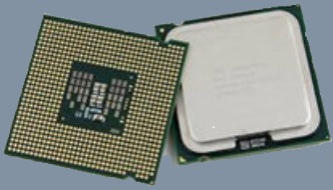


© Estwald ISI 2015 - 2025


Estwald’s
Information System Infrastructures

Central Processing Unit or Accelerated Processing Unit
There are still a few CPUs left but they are becoming a scarce
commodity. Newer processors, referred to as APUs or SoCs (Systems on a
Chip), incorporate one or more CPU(s) with a memory controller, input/output
circuitry, and perhaps a graphics processing unit (GPU). This significantly
increases the speed of transfers between subsystems, particularly the
onboard L3 cache and system memory.
On-board GPU’s are satisfactory for low frame rates used by movie
viewing, simple games, and modest office chores in most instances but for
applications that demand high frame rates, multiple color palettes, multiple
and/or high resolution screens, or geometric calculations; on-board graphics solutions are woefully inadequate.
Intel and AMD remain the two primary manufacturers of CPUs and APUs for notebook, desktop, and server use. The
history of the competitiveness between these two companies is an epic tale for the geeks among us but as of now they are fairly
equal. Intel’s 12000 series and AMD 5000 series CPU/APU’s are about equal as of 2021. For the money, Intel offers faster
single core speed but AMD offers more cores. So your selection of processors will depend on the type and number of software
applications being used and the users comfort level with non Intel solutions.
CPU/APU’s can run from as little as $180 for light workloads to $1800 for dedicated high end workstations. A typical
desktop capable of being used for general home and office use runs between $200 and $400. Server processors can run
between $300 and $3000.
















